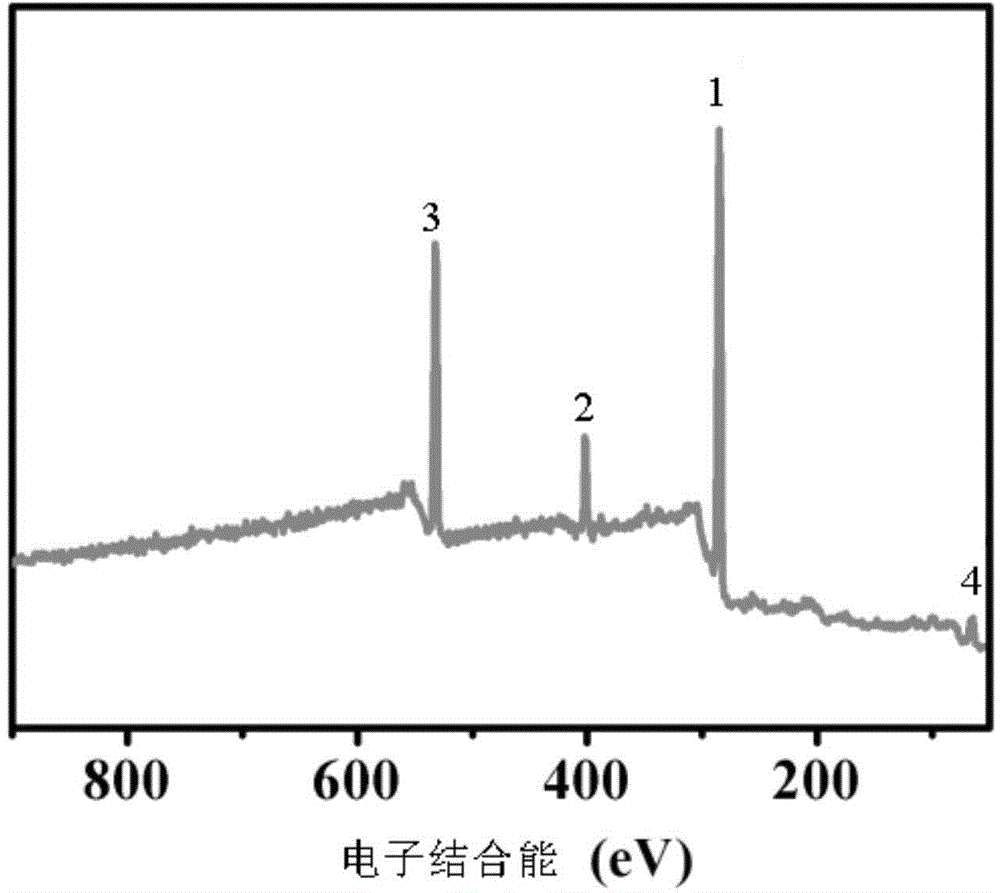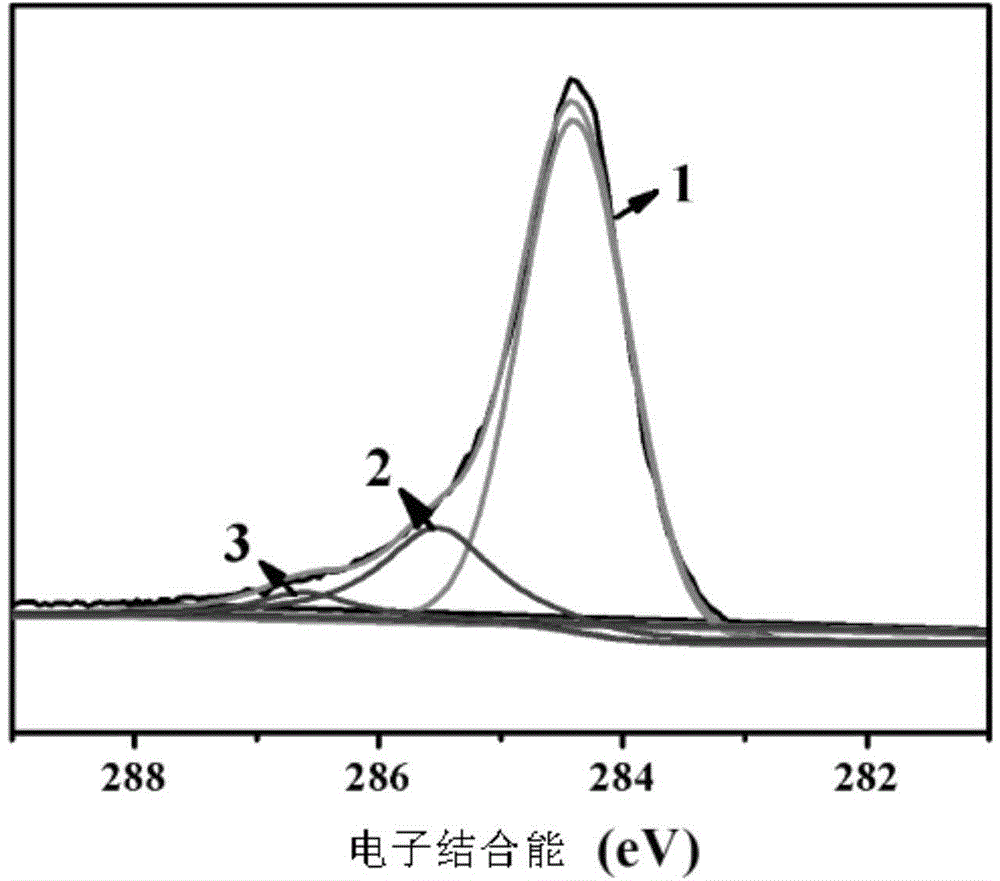Method of grafting hexamine on carbon fiber surface in supercritical methanol
A technology of hexamethylenetetramine and supercritical methanol, which is applied in the fields of carbon fiber, fiber treatment, textiles and papermaking, can solve the problems of uneven distribution of groups, low bonding strength between carbon fiber and resin, and improve reaction efficiency, The effect of increasing the surface area and increasing the mechanical meshing effect
- Summary
- Abstract
- Description
- Claims
- Application Information
AI Technical Summary
Problems solved by technology
Method used
Image
Examples
specific Embodiment approach 1
[0054] Specific embodiment one: This embodiment is a method for grafting hexamethylenetetramine on the surface of carbon fibers in supercritical methanol, specifically as follows:
[0055] 1. Cleaning:
[0056] ① Put the carbon fiber into a Soxhlet extractor filled with acetone, and use acetone to clean and remove impurities on the surface of the carbon fiber at a temperature of 75°C to 85°C. The cleaning time is 2h to 8h, and the cleaned carbon fiber is taken out. Obtain the carbon fiber after cleaning with acetone;
[0057] ②. Place the carbon fiber cleaned with acetone obtained in step ① into a supercritical device, and soak it in a supercritical acetone-water system with a temperature of 350°C to 370°C and a pressure of 8MPa to 14MPa for 20min to 30min to obtain ring removal Carbon fiber after oxygen coating;
[0058] The volume ratio of acetone and water in the supercritical acetone-water system described in step 2. is 5:1;
[0059] ③. Place the carbon fibers obtained ...
specific Embodiment approach 2
[0094] Specific embodiment 2: The difference between this embodiment and specific embodiment 1 is that in step 2 ①, the dry and cleaned carbon fiber obtained in step 1 ③ is impregnated into potassium persulfate / silver nitrate mixed aqueous solution, heated to 70°C, and The temperature is kept at 70°C for 1.5 hours to obtain oxidized carbon fibers; the concentration of potassium persulfate in the potassium persulfate / silver nitrate mixed aqueous solution is 0.1mol / L to 0.15mol / L; the persulfuric acid The concentration of silver nitrate in the potassium / silver nitrate mixed aqueous solution is 0.003mol / L-0.005mol / L. Other steps are the same as in the first embodiment.
specific Embodiment approach 3
[0095] Specific embodiment three: the difference between this embodiment and specific embodiment one or two is: in step three (1), put the thionyl chloride / N,N-dimethylformamide mixture into the dry reaction bottle, Put the dry oxidized carbon fibers obtained in step 2 ⑥ into a reaction flask, heat to 80°C, and react at a constant temperature of 80°C for 45h to 50h to obtain acyl chloride carbon fibers containing impurities. Other steps are the same as those in Embodiment 1 or 2.
PUM
| Property | Measurement | Unit |
|---|---|---|
| shear strength | aaaaa | aaaaa |
| tensile strength | aaaaa | aaaaa |
| shear strength | aaaaa | aaaaa |
Abstract
Description
Claims
Application Information
 Login to View More
Login to View More - R&D
- Intellectual Property
- Life Sciences
- Materials
- Tech Scout
- Unparalleled Data Quality
- Higher Quality Content
- 60% Fewer Hallucinations
Browse by: Latest US Patents, China's latest patents, Technical Efficacy Thesaurus, Application Domain, Technology Topic, Popular Technical Reports.
© 2025 PatSnap. All rights reserved.Legal|Privacy policy|Modern Slavery Act Transparency Statement|Sitemap|About US| Contact US: help@patsnap.com



